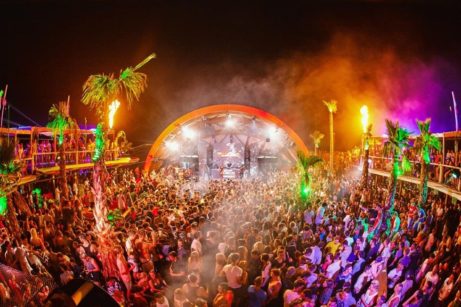Location
Povljana is located in a beautiful natural bay of the island of Pag. To the west it is protected from the strong winds of Bora and Sirocco. Located on a gentle hill, where karst rocks meet and fertile fields Povljana. Tombs and remains of everyday use have been found throughout the island. The oldest remains in Povljana were from 2000 to 2500 BC.
Povljana area offers both possibilities of endless swimming in crystal clear water, hiking, biking, surfing, kitesurfing and yachting. There are 5 main beaches in the city and its surroundings (Dubrovnik, Mali Dubrovnik, Perilo, Livade and Stara Povljana, which are both typical for Croatia pebble but also sandy. In close proximity to Dubrovnik beach there is the natural lake Segal with healing muddy sediment. ideal for the treatment of degenerative diseases, rheumatoid arthritis and skin diseases, due to its equality, the island also offers numerous hiking and cycling tours around the area, and for zadarbikemagic.com applica- tions for real biker lovers, there is nothing more pleasurable than a whistleblower. by the sea, next to the beach of Mali Dubrovnik If you want to know more where to go, visit visitpovljana.eu
How to get in Povljana from Nürnberg
Tips for trips island Pag

PAG (14km) city is located in the middle of Pag island in Pag gulf. Pag is city centrum of Pag´s specialities like pag cheese, quality white wine žutica, honey and typical meet taste of sheep and lambs. Here is very old tradition recovering salt of the sea.

NOVALJA – (34km) - Novalja is the typical tourist city with many of restaurants. The centrum of fun/music festival is the beach Zrće. More info on Zrće.

LUN (56km)village in the north of the island Pag. Protected and very old olive trees grow in the southern part of the Lun area. Almost nobody knows, that here is the biggest olive grove in Croatia. There are almost 80 000 trees and some of them are more than 1000 years old. This place is very quiet, and we recommended for a relax visit. www.vlm.com.hr
Tips for trips closest cities

ZADAR – (44km) It stretches partly on land and partly on a small peninsula. The historic center is dominated by the famous Kalelarga Street, a socially lively place in the Foša dock, or in the Arsenal Fortress. Zadar is proud of two modern, technically unique attractions, the Sea Organ and the Greeting to the Sun. The Sea Organ makes specific sounds and Greeting to the Sun creates a set of visual effects.

TROGIR – UNESCO – (156km) Very old city with harbour. Original city old centrum is located between continent and island Čiovo.

SPLIT – UNESCO – (185km) Typical dalmatian city with beautiful atmosphere. Here you can find many of cultural building including antic Dioklecijan palace UNESCO
Tips for trips national parks

PAKLENICA (53km) Paklenica National Park is a Velebit mountain and covers an area of 102 km2. The largest and most interesting parts of the park are two massive canyons, Velika Paklenica and Mala Paklenica, which are separated by 500 m high plateaus. More at: paklenica.hr

SEVERNI VELEBIT(80 km ferry or 150 km) This national park includes the northern part of Velebit, a mountain massif that rises above the Adriatic in the Croatian Littoral and Northern Dalmatia. In 1994 there was the greatest discovery of the Croatian Karst during the 20th century. - to discover the deepest Croatian cave-Luk's Cave - 1392. More at: np-sjeverni-velebit.hr

KORNATI - A group of small islands, islets in the southern part of the North Dalmatian islands. Because some islands are excellent harbours or berths due to the rugged and protected bays, centuries ago, pirates were used. During World War II they served as shelter for guerrillas. Kornati is a paradise for sailors and divers. More at: np-kornati.hr

KRKA – (102km) Croatian National Park Krka is a system of rapids, cascades and waterfalls, where you can swim. There is also a possibility to take a boat trip to the Krka canyon to the Rosh waterfall - Roski slap and to the island of Visovac, where the Franciscan monastery and museum. More info at: np-krka.hr

PLITVICE LAKES – UNESCO (144km)The core of the Plitvice National Park is a system of 16 terraced lakes interconnected by waterfalls and cascades. The altitude difference between the highest and lowest situated lake is 500 meters. The lakes originated in dolomitic limestones - they are constantly changing by the growth of travertine dams on terraces, erosion of travertine blocks etc. The surroundings are formed by exceptionally well-preserved forest and forest stands, rich fauna and flora. More information at: np-plitvicka-jezera.hr
TIP Sky-apartment No.2
Are you more and want to live together in our apartment? Just place your order through our website and we will prepare up to 3 sleeping places on the sleeping floor above the kitchen for a fair price.



